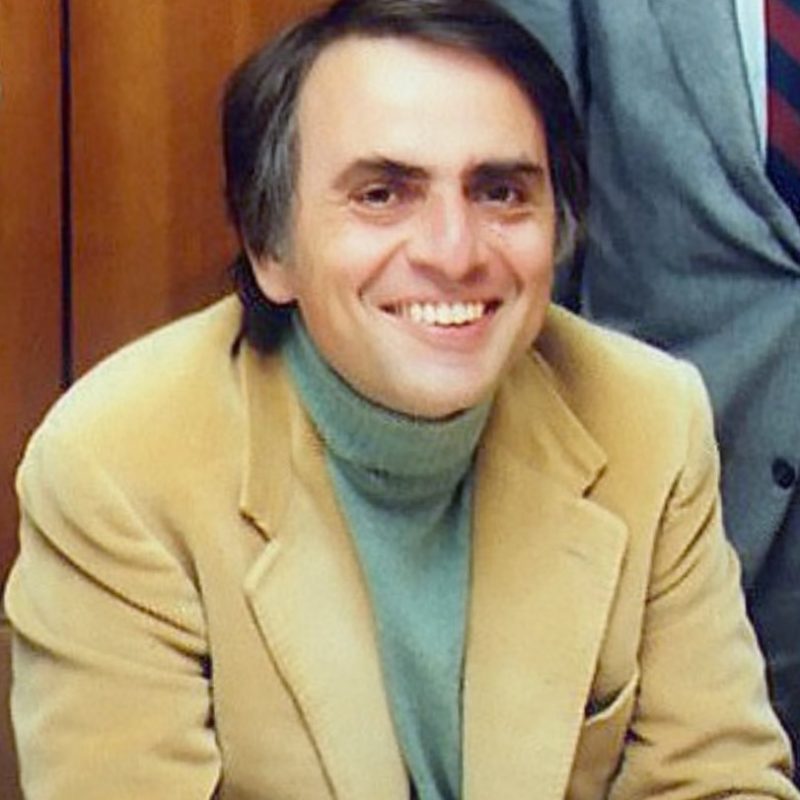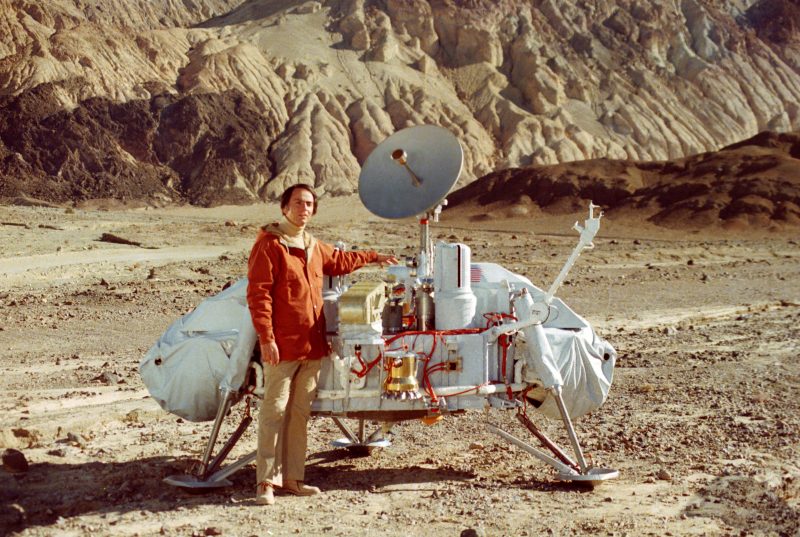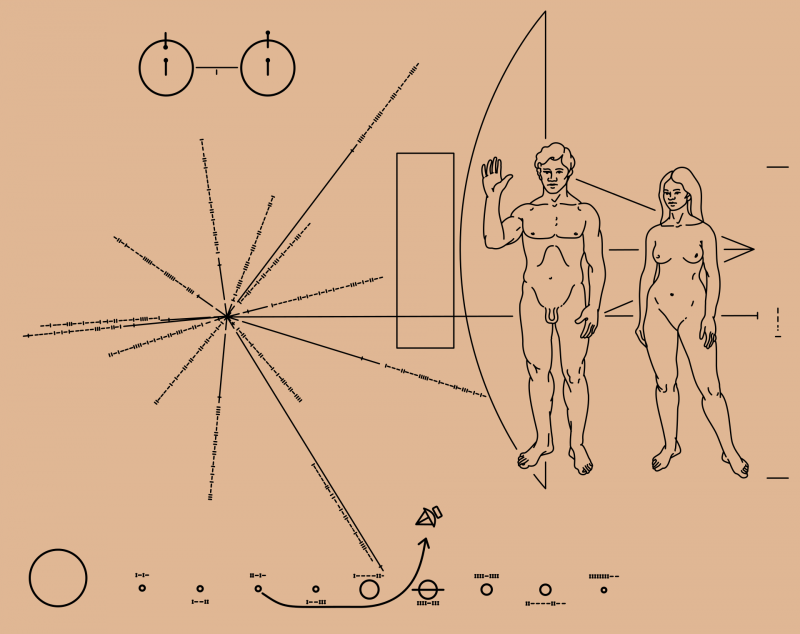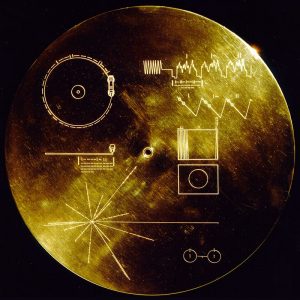
Carl Sagan born November 9, 1934
Today is the anniversary of the birth of the late astronomer – and astronomy popularizer extraordinaire – Carl Sagan. Many know him through his books and his 1980 television series Cosmos. Sagan also contributed to the field of planetary science and monumentally – perhaps immortally – to the American space program.
Carl Edward Sagan was born on November 9, 1934, in Brooklyn, New York. He studied physics at the University of Chicago and earned his doctorate in astronomy and astrophysics in 1960.
In the 1960s, one of Sagan’s earliest works in professional astronomical research shed light on the atmospheres of our solar system’s planets. For example, the atmospheres of Mars and Venus. Because in Sagan’s day, scientists were still trying to understand how Mars could be so cold while Venus is so hot. Sagan successfully confirmed that Venus could be a greenhouse furnace by using data from tables for steam boiler engineering.
Carl Sagan and the search for extraterrestrial intelligence
Around this same time, Sagan became interested in the search for extraterrestrial intelligence (SETI) and contributed to those programs. He proved that the building blocks of life could be easily created by exposing simple chemicals to UV light. In 1966, he helped I. S. Shklovskii, a Soviet astronomer and astrophysicist, revise and expand his classic book on extraterrestrial life, Intelligent Life in the Universe.
In 1971, Harvard University denied Sagan tenure; some speculated it was due to his controversial opinions on extraterrestrial intelligence. He went on to become a professor at Cornell University in Ithaca, New York, where he spent the rest of his professional career.
Also, Sagan contributed to the U.S. space program. Among other things, he briefed astronauts before their trip to the moon, and he was part of the Mariner, Viking, Galileo, and Voyager space missions. In the Viking missions, for example – two probes sent to explore Mars in the 1970s – he collaborated on choosing ideal landing sites.

But, in addition to his books and the Cosmos television series, it’s Sagan’s actual messages to the cosmos – placed aboard the first spacecraft designed to leave our solar system, on the Pioneer and Voyager missions – that may be his greatest legacy.
Messages to the stars: Pioneer
The original idea for the Pioneer plaques – a pair of gold-anodized aluminium plaques carrying messages from humankind, placed aboard the 1972 Pioneer 10 and 1973 Pioneer 11 spacecraft – originally came from journalist and consultant Eric Burgess. He approached Sagan about it, and NASA agreed to it and gave Sagan three weeks to prepare a message. Together with astronomer Frank Drake, who formulated the famous Drake Equation (a way of estimating the number of intelligent civilizations in our Milky Way galaxy), Sagan designed the plaque, with artwork prepared by his wife at the time, Linda Salzman Sagan.
The Pioneers and the plaques they carry are now billions of miles from Earth, Pioneer 10 is now in interstellar. But eventually they’ll cross out of the sun’s influence, into the realm between the stars.

Messages to the stars: Voyager
Later in that same decade, in the late 1970s, Sagan and his wife-to-be, Ann Druyan, contributed to the design of yet another message from humankind to outer space. By the way, the Voyager probes launched in 1977. They both carry what is known as a Voyager Golden Record. Each Golden Record contains 116 images that depict historical scientific works and humans performing mundane activities, plus music from artists such as Bach, Mozart, and Chuck Berry, an hour-long record of Ann Druyan’s brainwaves, and greetings in 55 languages.
Click here for a list of all the material on the Golden Records
Listen to the entire musical selection of the Golden Records
The Voyagers launched later, but traveled faster than the Pioneers. Voyager 1 and 2 have reached interstellar space. In fact, Voyager 1 is the farthest human-made object from Earth. Voyager 2 is somewhat closer, more distant than Pioneer 10.
Click here to see where the Voyager probes are, in real time

Carl Sagan’s legacies
During the 1980s, Sagan encouraged nuclear disarmament and was one of the five authors of the concept of nuclear winter, which describes the aftermath of a nuclear war. Moreover, the work showed once and for all that, in a nuclear war, no one would win. It’s hard to estimate the importance of this work to the global consciousness of the time, but it’s perhaps no accident that the Cold War ended not long afterwards.
Carl Sagan remained at Cornell until his death on December 20, 1996, at age 62 from pneumonia.
Over the course of his life, Carl Sagan wrote more than 600 professional astronomical research papers and 20 books. He was an inspiration to many, and continues to inspire many young scientists to thread the path of astronomy and astronomical communication. Plus, he encouraged scientific responsibility by promoting nuclear disarmament. Equally important, his work in science outreach encouraged science literacy not only among Americans, but around the world. He was very quotable and said, among many other wonderful things:
The nitrogen in our DNA, the calcium in our teeth, the iron in our blood, the carbon in our apple pies were made in the interiors of collapsing stars. We are made of starstuff.
Do you remember him? Do you remember his words and the sound of his voice? Listen and remember, via the video below.
Bottom line: Carl Sagan was born on November 9, 1934. He is most remembered for his efforts in popularizing science through his books, for his television series Cosmos and for his messages to the cosmos placed on the Pioneer and Voyager spacecraft.
The post Carl Sagan born 88 years ago today first appeared on EarthSky.
0 Commentaires